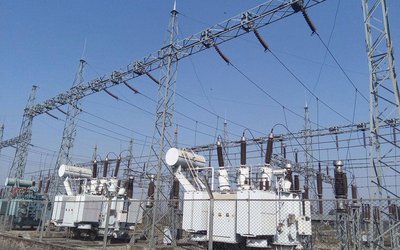Traveling across EuroAmerica these days one encounters two types familiar with Nepal. The vast majority are well-meaning people who have either been to Nepal or known someone who has. They had heard that things were bad in that erstwhile hippie heaven, but now that Nepal has fallen off Western media's radar, they assume everything is fine. One only wishes it were true but explaining to this group Nepal's political mess, which is now beyond surreal, is an impossible task and one gets away by mumbling something and quickly moving on to discuss the brawl on Mt Everest.
It is the other lot, a knowledgeable minority, whose reactions are more interesting because they point to Nepal's losing its Shangri-La status and becoming a shame to friends abroad. These are often people who actively participated in helping forge a New Nepal, as diplomats, aid agency workers or academics. They seem to have hoped that Nepal's revolutionary epiphany would cool their consciences since they have singularly failed to prevent their own countries going almost fascist right. This lot is currently embarrassed by Nepal and while curious, would avoid discussing deeper issues with critics of Loktantra like me. They despise the current crop of Nepali politicians they hoped so much from, and are angry with India for its double standards and for letting them down. But Nepal is not that important for them to stick their necks out: there are newer patches they can move on to – the new Shangri-La darling being Myanmar – for their next step on the career ladder.
The gap between rhetoric and reality is best illustrated within the aid industry regarding Nepal's having achieved MDG goals. Her poverty level has reduced quite dramatically, and education, nutrition and health indicators have shown impressive improvements. In one study, she has done well even in the electricity sector, with more people having access to it than before. Given that Nepal “enjoys” the highest hours of power cuts per day than it ever did previously, that overly optimistic assessment should alert critical observers to the incongruity of the chest-thumping bravado one hears so often these days.
The truth of the matter is that, yes, Nepal has achieved impressive gains in many development indicators; but unfortunately, none of that has even the faintest causal link with any Nepal government or donor agency policy or efforts. The former has effectively not existed since 2006, and the latter were too preoccupied this last decade with conflict resolution and supporting the failed CA for nation restructuring to invest meaningfully in development, especially in infrastructure. These gains, on the contrary, happened because of the humble and faceless Nepali toiling masses out-migrating en masse to the Gulf or East Asia in numbers unprecedented in its history and sending back remittances to their families in amounts orders of magnitude more than they would have if they had found a job within Nepal.If any causal link to policy is to be sought, it can probably be traced to a 1998 policy reaction by the foreign ministry (led then if I remember correctly by Dr Prakash Lohani) to the just-started Maoist insurgency. That single decision allowed for passports to be issued in the districts, dramatically reducing transaction costs for an average rural Nepali and pleasing every mother there anxious to get her son or daughter out of the clutches of Maoist forced recruitment. (The Maoists had then called that outmigration phenomenon just “feudal exploiters fleeing the villages from their revolutionary actions”!) One will, however, no doubt see and hear of comical acrobatics by incestuously selected “policy impact evaluators” linking questionable donor efforts to the achievements of MDG goals, if for no other reason than the well-funded nature of the effort.
I can personally reflect on the electricity figure. It was in early 2003 when I was chairing the NEA ex-officio as water resources minister that the incongruity surfaced with the release of the official household survey results. Till then, the official figure for access to electricity in Nepal was eighteen percent of Nepal's population. The new survey figure said it was double, thirty-six percent. The first reaction in the NEA to this surprising discrepancy was: who is stealing our electricity?
It was later when cooler heads prevailed that we spotted the methodological discrepancy: NEA knew the number of electricity meters it had provided and simply multiplied that by the average number of persons per household to get the eighteen per cent figure. On the other hand, the household survey had simply asked: “Do you have electricity?” without clarifying whether it was stolen, generated from private diesel, solar , peltric or microhydro, or sublet from village “big men” who had it because they could afford the upfront deposit NEA demanded. It was no MDG achievement, but merely miscounting. That and the absence of any government policy to quickly shift away from fossil fuels to renewables, which has resulted in an estimated 520 MW of diesel electricity in every guest house and shopping complex to offset the official power cuts. The figure rivals the NEA's installed capacity of about 700 MW, proving that lack of money is not how Nepal's electricity development dilemma should be defined: it is lack of confidence in government and its policies.
Absence of meaningful government is seen everyday in Nepali society's responses to emergencies. With the massive cloudburst in Far West Nepal and India's Uttarakhand, unilateral Indian developments on the border river Mahakali is again in the news. The town of Darchula was devastated by the Mahakali, for which the local officials and politicians blame the Indian side. The Indian embassy came out with an unusually quick statement clarifying that the Dhauliganga hydro project on the Indian side was not responsible for the floods. For once, they could be partly right and also wholly wrong, together with their Nepali accusers, regarding the cause of the flood devastation. Partly right because Dhauliganga is a small run-of-river hydroelectric project with a small pondage (compared to the magnitude of the floods) that could exacerbate, but not cause, an already bad situation. Opening the barrage gates to save the power plant is quite justified, and the Indians would not be that crazy to do so if they knew it could have washed away their own army camp below, which did happen.
The real reason for the devastation in Darchula, as also along the Alaknanda and Bhagirathi in Uttarakhand, is the massive cloudburst, the landslides and lake outbursts it triggered from the side of Mother Nature. From the more significant side of human stupidity the real culprits were houses and hotels built on the flood path with poor planning as well as massive populist road-building in the fragile hills without a thought of extreme event drainage. In the case of Darchula, it seems the Indian side had gone ahead and unilaterally built river protection works on its side (in violation of an agreement between Pithoragadh's district magistrate and Darchula's CDO office to do river training works jointly on both sides of the border) that diverted the surge on the Dhauliganga to houses and structures on the Nepali side, wiping them away. That, and the humanitarian failure to warn the Nepali side that dam gates were being opened even when repeatedly requested by our local officials, is what should have been protested by Kathmandu as a violation of the letter and spirit of the Mahakali treaty. For that, however, one needs a government, a real one and not a phantom that looks like one but is manipulated by others as a puppet on strings.
The embarrassed puppet masters hope an election – any election, any how, for anything, by anybody, with anyone voting – would salvage their “democratic” credentials, and they could then wash their hands off the embarrassment that New Nepal has become. Just as Mahakali treaty was to save them the embarrassment of Tanakpur. Unfortunately, just as with Mahakali treaty, elections within a political vacuum will probably create an ever bigger impasse down the road; but that is not something our dear foreign well-wishers are worried about right now.

Dipak Gyawali
Gyawali is Pragya (Academician) of the Nepal Academy of Science and Technology (NAST) and former minister of water resources.
- Maldevelopment And Technology: Ethos Harbingering Coming Apocalypse
- Apr 03, 2024
- World Social Forum: Rethinking and Redefining Development Itself
- Feb 21, 2024
- Remembering An Inspiring Karma Yogi
- Jan 09, 2024
- New World Disorder And The Case For Ideology
- Dec 13, 2023
- Loktantra’s Moral Turpitude
- Nov 06, 2023
















